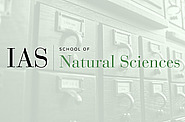Joint IAS Princeton University Astrophysics Colloquium
Oct
11
2022
Institute for Advanced Study / Princeton University Joint Astrophysics Colloquium
New Insight into Cosmology and the Galaxy-Halo Connection from Non-Linear Scales
Frank van den Bosch
10:30am|Wolfensohn Hall
Oct
04
2022
Institute for Advanced Study / Princeton University Joint Astrophysics Colloquium
In search of universality: towards a statistical mechanics of collisionless plasma
Alex Schekochihin
10:30am|Wolfensohn Hall
Sep
27
2022
Institute for Advanced Study / Princeton University Joint Astrophysics Colloquium
A continuous theory for the origin of stellar systems
Kaitlin Kratter
10:30am|Wolfensohn Hall
Sep
20
2022
Institute for Advanced Study / Princeton University Joint Astrophysics Colloquium
Brave New World of Numerical Relativity
Deirdre Shoemaker
10:30am|Wolfensohn Hall
Sep
13
2022
Institute for Advanced Study / Princeton University Joint Astrophysics Colloquium
Origin of the Moon: New Results and Open Issues
Robin Canup
10:30am|Wolfensohn Hall
Sep
06
2022
Institute for Advanced Study / Princeton University Joint Astrophysics Colloquium
Current and Next Generation Millimeter-wave Surveys
Mark Devlin
10:30am|Wolfensohn Hall
Apr
19
2022
Institute for Advanced Study / Princeton University Joint Astrophysics Colloquium
The Atmosphere-Interior Connection of Super-Earths and Sub-Neptunes: From Formation and Evolution to Observations
Hilke Schlichting
11:00am|Virtual and PU, Peyton Hall Auditorium
Apr
12
2022
Institute for Advanced Study / Princeton University Joint Astrophysics Colloquium
The Wild West of Nuclear Transients
Suvi Gezari
11:00am|Virtual and PU, Peyton Hall Auditorium
Apr
05
2022
Institute for Advanced Study / Princeton University Joint Astrophysics Colloquium
The Baryon Cycle in Dwarf-Dwarf Mergers: Fueling Hierarchical Assembly
Sabrina Stierwalt
11:00am|Virtual and PU, Peyton Hall Auditorium
Mar
29
2022
Institute for Advanced Study / Princeton University Joint Astrophysics Colloquium
Searching for axion-like particles with X-ray observations of galaxy clusters.
Christopher Reynolds
11:00am|Virtual and PU, Peyton Hall Auditorium
